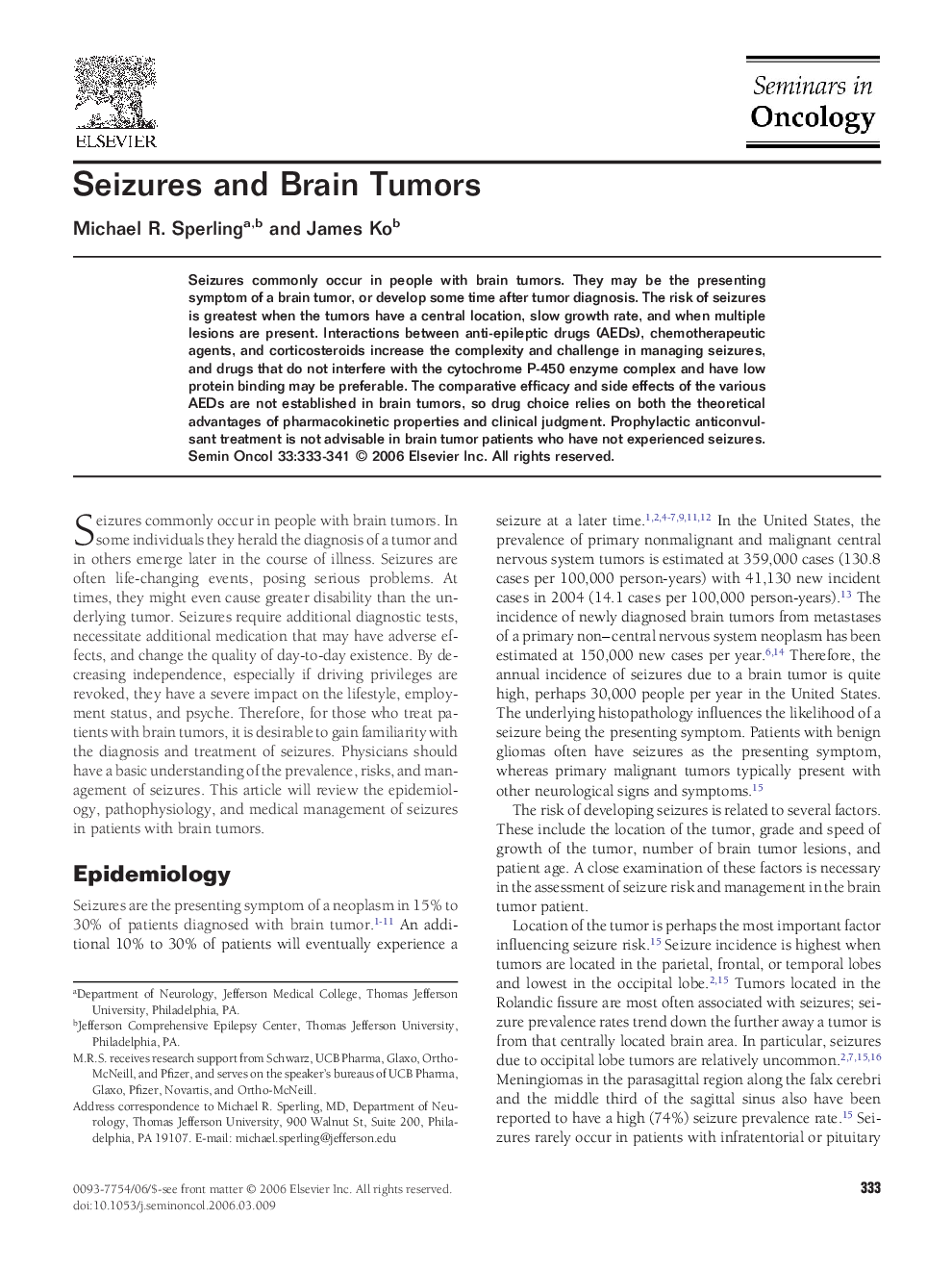| Article ID | Journal | Published Year | Pages | File Type |
|---|---|---|---|---|
| 2163191 | Seminars in Oncology | 2006 | 9 Pages |
Abstract
Seizures commonly occur in people with brain tumors. They may be the presenting symptom of a brain tumor, or develop some time after tumor diagnosis. The risk of seizures is greatest when the tumors have a central location, slow growth rate, and when multiple lesions are present. Interactions between anti-epileptic drugs (AEDs), chemotherapeutic agents, and corticosteroids increase the complexity and challenge in managing seizures, and drugs that do not interfere with the cytochrome P-450 enzyme complex and have low protein binding may be preferable. The comparative efficacy and side effects of the various AEDs are not established in brain tumors, so drug choice relies on both the theoretical advantages of pharmacokinetic properties and clinical judgment. Prophylactic anticonvulsant treatment is not advisable in brain tumor patients who have not experienced seizures.
Related Topics
Life Sciences
Biochemistry, Genetics and Molecular Biology
Cancer Research
Authors
Michael R. Sperling, James Ko,
